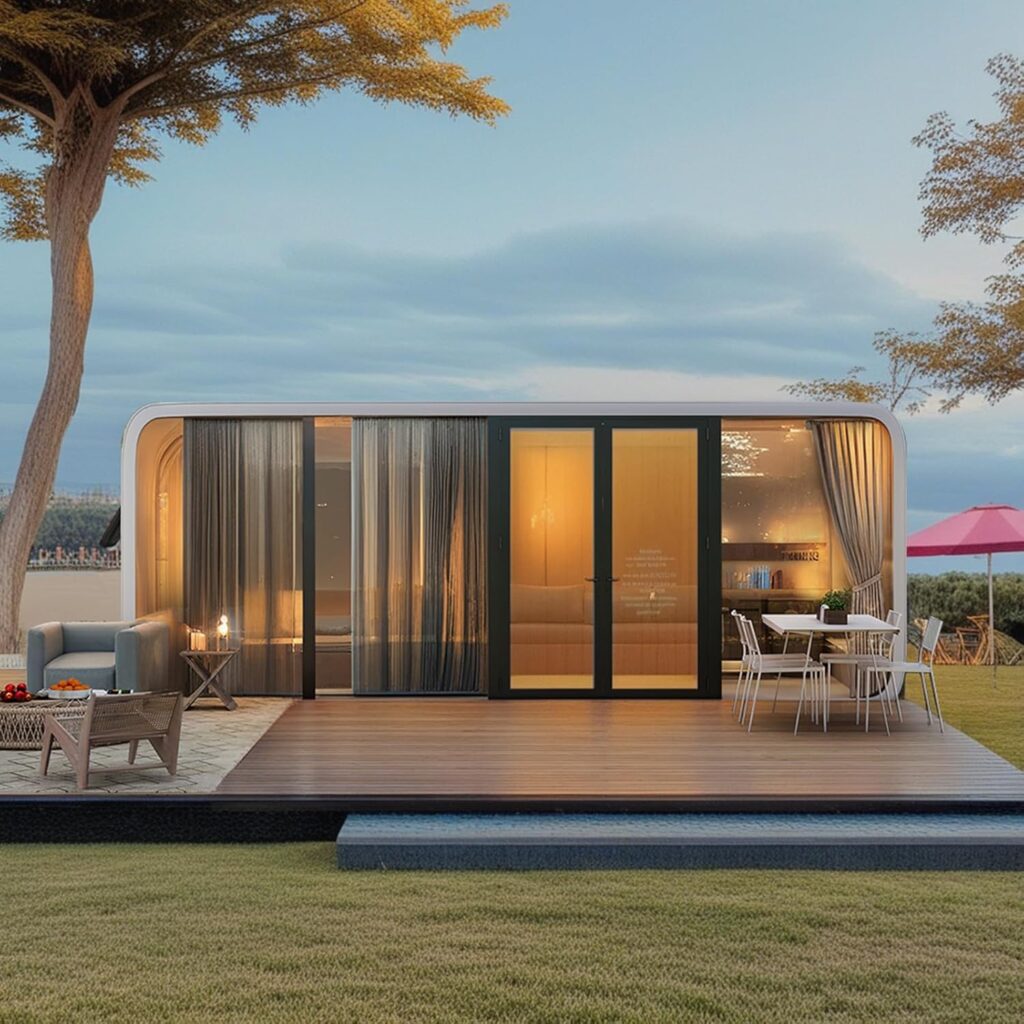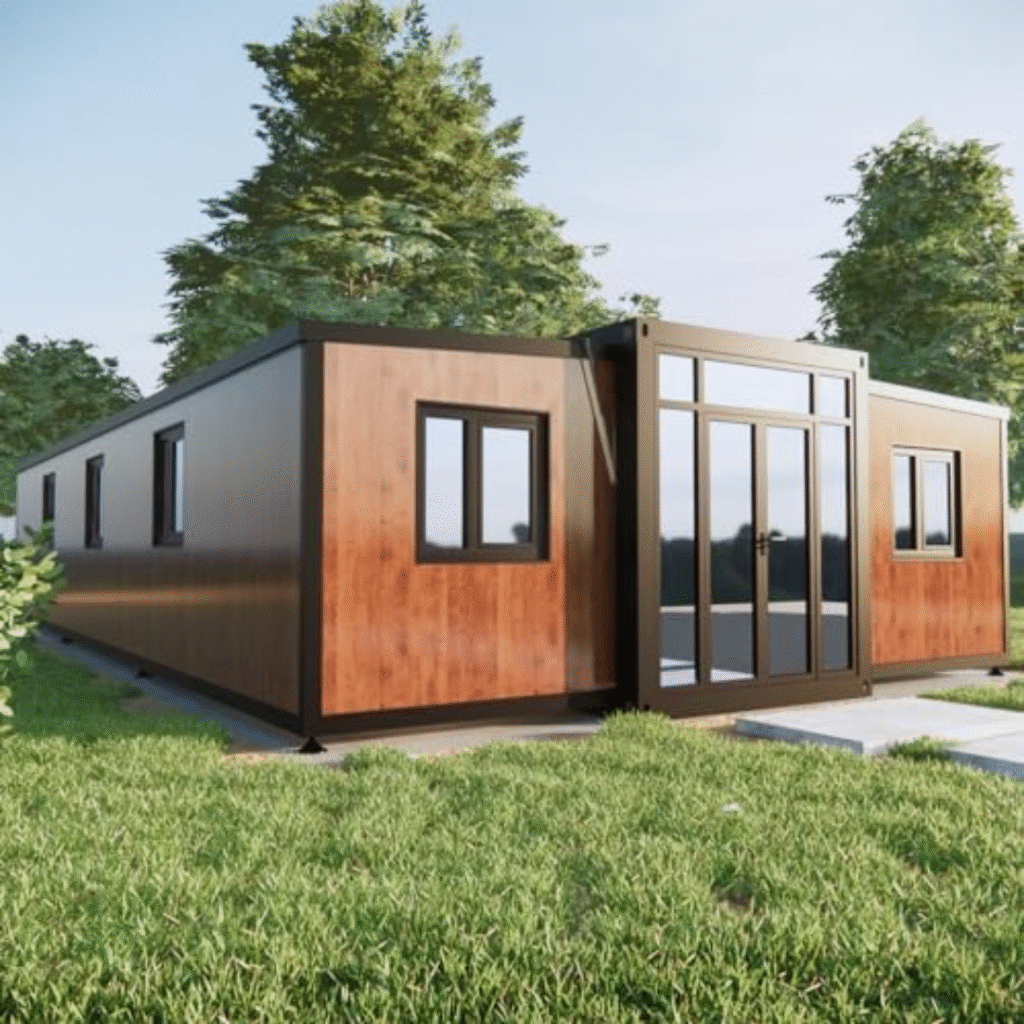Hook: The perfect combination of innovation and environmental awareness is found in prefab sustainable homes. They bring together technology, smart design, and a smaller footprint to create beautiful, affordable, planet-friendly housing.
1️⃣ What Are Prefab Sustainable Homes?
Prefab sustainable homes are buildings designed to have an environmentally responsible life cycle, from production to final reuse or disposal. Unlike conventional construction, which generates excessive waste, material scraps, and heavy use of natural resources, prefab systems optimize every stage. In the factory, pieces are precisely cut, minimizing leftovers and errors. Assembly is faster on-site, which means less noise pollution and reduced energy consumption.
In countries more advanced in sustainability, like Canada, Sweden, and Norway, this type of housing is already standard in entire communities. These homes aren’t fragile as some people think. Quite the opposite: modular engineering, high-durability materials, and precision fitting make them resilient to weather and wear, even in extreme climates.
Another major advantage is design flexibility. You can start with a smaller module and expand as your family grows—without tearing down walls or generating more waste. For anyone looking to live well while saving energy and lowering their environmental impact, prefab sustainable homes are a growing and accessible option. Research certified suppliers, compare prices, and discover how to build your dream home with conscience and innovation.


Check out this model on amazon
AMGUI Luxury Modern prefab Cabin – 19 ft Mobile Capsule with Bedroom, Kitchen and Bathroom, Storm Resistant prefab Cabin -16 Typhoon and
2️⃣ Most Popular Eco-Friendly Materials
Material choice is a key advantage of prefab sustainable construction. The favorites include bamboo, FSC-certified reforested wood, repurposed shipping containers, and steel frame systems that use low-impact galvanized steel.
Bamboo, for example, is one of the world’s fastest-growing plants. It’s lightweight yet strong, regenerates quickly, and makes a renewable alternative. Reforested wood, when properly managed, helps preserve native forests while providing beautiful, natural finishes.
Recycled shipping containers are another creative solution. They’re given new life as housing modules, preventing tons of steel from ending up in landfills. If you love an industrial or modern look, this option combines style and sustainability.
Steel frame systems stand out for precision and reduced waste on-site. They also offer excellent thermal and acoustic insulation, saving energy over the long run.
Remember: choosing eco-friendly materials goes beyond a “green” label. Check sourcing, durability, transportation impact, and the potential for reuse to ensure your home truly respects the environment.
3️⃣ How to Integrate Renewable Energy
Integrating renewable energy into prefab homes is a smart move that boosts sustainability. Solar panels are at the top of the list since they can meet a large portion of your electricity needs. Installing panels on pitched or flat roofs is practical and can be scaled over time.
Beyond solar, some homes use small wind turbines, especially in areas with consistent winds. This hybrid system ensures autonomy and steady clean energy supply. Another innovation is piezoelectric floors, which generate power from footsteps—a technology still emerging but promising for the future.
To maximize renewable energy, home automation makes a big difference. Motion sensors, LED lighting, smart plugs, and energy-efficient appliances help cut waste. In many regions, you can even sell surplus solar energy back to the local grid, earning credits on your electricity bill. Though upfront costs can be high, the monthly savings make it worthwhile—and it adds value to your home
4️⃣ Smart Water Harvesting and Reuse Systems
Water is precious. That’s why prefab sustainable homes invest in systems to reuse every drop. Rainwater harvesting is common: roof gutters direct rain into underground cisterns or external tanks, where it’s filtered for non-potable uses like garden irrigation, toilet flushing, and floor cleaning.
Another popular solution is rain gardens—green areas designed to absorb and filter runoff, helping prevent urban flooding.
For those who want to go further, greywater recycling is excellent. This system treats water from sinks, showers, and washing machines, allowing it to be reused for toilets and landscaping.
These systems can be automated with smart pumps, level sensors, and easy-to-maintain filters. You save on water bills and help conserve precious resources. Always consult a professional to assess soil conditions and structural needs. With good planning, any modular project can become a model of water efficiency.
5️⃣ Natural Insulation Solutions
Good insulation is key for thermal comfort and energy efficiency. Many conventional homes rely on synthetic, high-impact materials, but sustainable construction focuses on natural, renewable options.
Sheep’s wool, for example, is an excellent natural insulator, keeping heat inside in winter and blocking excess heat in summer. Recycled cellulose, made from treated paper, is also popular: it’s fire-resistant and protects against mold and pests.
Other options include hemp and cork. Hemp grows quickly and has antifungal properties, while cork is lightweight, flexible, and harvested without cutting down trees. These materials drastically reduce your project’s carbon footprint.
Proper insulation directly impacts energy use, reducing your need for heating and cooling systems. The result? A more self-sufficient, comfortable home in any season. Always check suppliers’ certifications and have professionals handle installation. Good insulation pays off in savings and well-being.
6️⃣ Green Roofs and Vertical Gardens
Green roofs are major allies in sustainable construction. They create a microclimate on your roof, helping regulate indoor temperatures, absorbing rainwater, and filtering air pollutants.
Vertical gardens can be installed on external façades or interior walls, bringing more greenery indoors. They’re great for cities with little space for horizontal gardens.
Besides environmental benefits, green roofs extend the life of conventional roofs by shielding them from harsh sun and heavy rain.
Before adding one, consult an engineer or architect to check structural support. You’ll need proper waterproofing, drainage, and plant species suited to the local climate.
Bonus: these areas can become urban veggie gardens, encouraging organic food production at home. Your modular house can also be a productive, educational space that connects you with nature every day.
7️⃣ Real-Life Examples: Inspiring Sustainable Communities
Around the world, inspiring communities use prefab homes as the foundation for sustainable living. In Sweden and Norway, entire villages rely on modular timber houses with solar panels. In Canada, some eco-villages include shared greenhouses, community gardens, and composting programs.
These communities are built on a collaborative philosophy. Residents share leisure spaces, repair workshops, and even car-sharing systems, reducing each person’s resource footprint.
The positive impact goes beyond the environment: studies show people in sustainable communities enjoy better quality of life, stronger social connections, and more opportunities to learn together.
These cases prove that living well and caring for the planet can go hand in hand—and every individual choice contributes to systemic change.

8️⃣ Green Customization: How to Adapt Your Modular Home
One of the biggest perks of prefab homes is flexibility. You can customize everything from layout to finishes while prioritizing low-impact solutions.
Want a rustic style? Use exposed wood, reclaimed furniture, and natural paints. Prefer a modern vibe? Try shipping containers with large windows for natural light.
For smart living, invest in home automation: sensors to monitor temperature, humidity, and energy use optimize resources in real-time.
Even furniture can follow a green concept, using reclaimed pallets, recycled pieces, or custom-built units that minimize material waste and maximize your space.
Every detail helps turn your house into a unique, functional home that reflects your sustainability values.
9️⃣ Interview with a Specialist Architect
There’s nothing more valuable than hearing from an expert. An interview with an architect specializing in sustainable modular construction can clarify common doubts and show people how to invest wisely.
Reference: Use the Casa Vogue article “Modular Architecture: The Sustainable Trend That Reduces Costs and Waste” as inspiration. In it, architects like Marcio Kogan discuss real-life cases in Sweden, Norway, and Canada.
Ask questions that go beyond the basics:
- What’s the biggest mistake clients make?
- Which trends are here to stay, and which might become obsolete?
- How do you balance cost, aesthetics, and environmental impact?
Recording it as a video or podcast adds extra value, attracts new audiences, and positions your content as an authority on the topic.
🔮 10️⃣ Future Trends: What to Expect from Sustainable Homes
Finally, look ahead. 3D-printed homes are already a reality in some places, with ergonomic structures and near-zero waste. The Internet of Things (IoT) is making homes smarter and more efficient—from automatic lighting to intelligent energy monitoring.
The trend is for more off-grid communities to emerge, seeking energy and water independence. Another big bet is the rise of collaborative ecosystems, where residents share not just spaces but also responsibility for caring for the environment.
All this shows that prefab sustainable homes aren’t just a passing trend—they’re becoming a new standard for people who want to live well today without compromising tomorrow.







